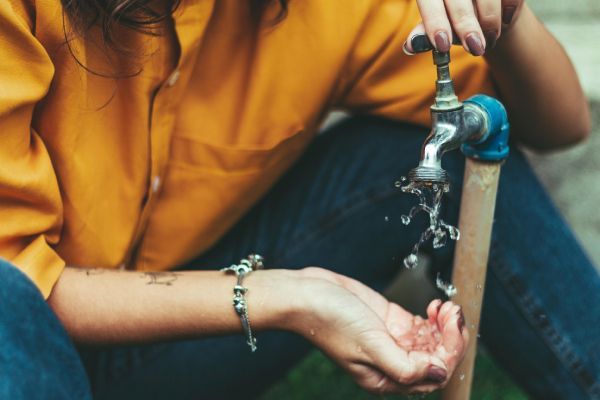Master Plumbers Blog
What is Plumbing Backflow and How Do You Prevent It?
Plumbing backflow happens when water from a drainage pipe flows in the opposite way from its intended direction. While the situation sounds benign, backflow can be extremely dangerous for both the property and its inhabitants.
Because pipes are generally designed to regularly handle flows from one direction only, backflow pressure can often result in burst pipes and flooding, which can be very expensive to remedy. In addition, backflow can pose a serious health risk as it could introduce harmful substances like cleaning chemicals or pathogens into a water supply that’s used for bathing, drinking, or cooking. If a plumbing system has separate hot and cold plumbing, the unexpected introduction of hot water into pipes that are normally connected to showers or faucets can cause serious burns.
Assuming that your plumbing system was built up to code and not being constantly overloaded, backflow should be a relatively uncommon occurrence. However, it can still happen even in well-maintained systems for various reasons. For example, in Dunedin, backflow events tend to increase during winter as water freezes in unprepared pipes, bursting them or altering internal pressures in unintended ways. In these situations, it’s best to call Dunedin plumbing experts to provide reliable
emergency plumbing services.

Types of Backflow
Backflow events usually fall under two categories:
- Back pressure. This can occur when the pressure in the main line becomes higher than the pressure in the clean water supply, forcing water to flow backwards. In conventional plumbing systems, backflow induced by back pressure can happen when fixtures are turned on before the mains are opened or when a system pump is used incorrectly.
- Back siphonage. When negative pressure causes water from a contaminated source to enter a part of a plumbing system that’s intended for clean water, it is back siphonage. This is often observed in plumbing systems with septic tanks, rainwater catchments, and greywater recycling systems, which are common in rural areas.
Main Causes of Plumbing Backflow
There are plenty of events that can cause plumbing backflow. Some of the most common include the following:
Damaged Water Mains
Leaking or burst water mains can lead to a drop in pressure that can cause water that’s stuck in your home plumbing to flow out the opposite way. In colder places like Dunedin, damaged mains are common when pipes aren’t inspected at the onset of winter.
Pipe Refitting or Overhauling
Older homes that are refitted with new plumbing will typically have their water service stopped temporarily, which can potentially result in some backflow.
Heavy Rains
During heavy rains or flooding, septic tanks or water recovery systems can get overwhelmed. This can cause the contents of these systems to flow the opposite way.
Outdated Plumbing
Valves, taps, and other plumbing fixtures have a finite lifespan. Eventually, they will get worse at blocking water flows or removing them from your house’s plumbing.
Clogged Pipes
Clogged drains can cause blocked water to go up into your clean water pipes, especially if you have an older home that uses pipe traps.
In-House Pressure Differences
If you’re unable to turn on your taps or showers without causing a backflow, but your water main doesn’t seem to have any problems, there may be a pressure issue in your house.
Preventing Backflow Problems in Your Home
As mentioned, plumbing backflow isn’t just hazardous to your property. In some circumstances, it could also be harmful to your health. This makes it important to call certified drainlayers and qualified plumbers like Mains Plumbers as soon as you see a persistent backflow issue in your home.
It’s best, of course, to not have to deal with plumbing backflow in the first place. Fortunately, preventing plumbing backflow in your home can be done through some easy measures:
Install Backflow Prevention Devices
There are accessories like backflow preventer valves, air gaps, and check valves that you can install in plumbing systems to restrict water flow in one direction only. Using most of these products will require professional help, as incorrect installations can potentially worsen rather than alleviate backflow.
Regular Maintenance
As mentioned, plumbing fixtures have a finite lifespan because they are subjected to constant pressure. Even if you do have backflow prevention devices, it’s still important to regularly inspect and maintain your plumbing systems to ensure that everything is working as intended. Periodically check for leaks and replace worn-out valves, pipes, and fittings as needed. Be sure to have a professional contractor do the more complex jobs, as improper maintenance can also lead to backflow issues.
Cross-connection Control
Cross-connections, which are the points where the plumbing system comes into contact with potentially contaminated water sources, should be eliminated or properly managed to prevent backflow. This may involve installing backflow prevention devices at points where the plumbing system connects with sources of non-potable water, such as irrigation systems or industrial equipment. If you have just come into possession of an older home, have a professional look over the plumbing so that you know where such cross-connections are present.
Compliance with Regulations
If you own an older property, your plumbing system may no longer be compliant with the latest local plumbing regulations and best practices. Usually, homes that are older than 20 years should have their plumbing systems checked and updated to follow modern best practices. This is not just for regulatory compliance, but also for minimising backflow and other plumbing issues.





